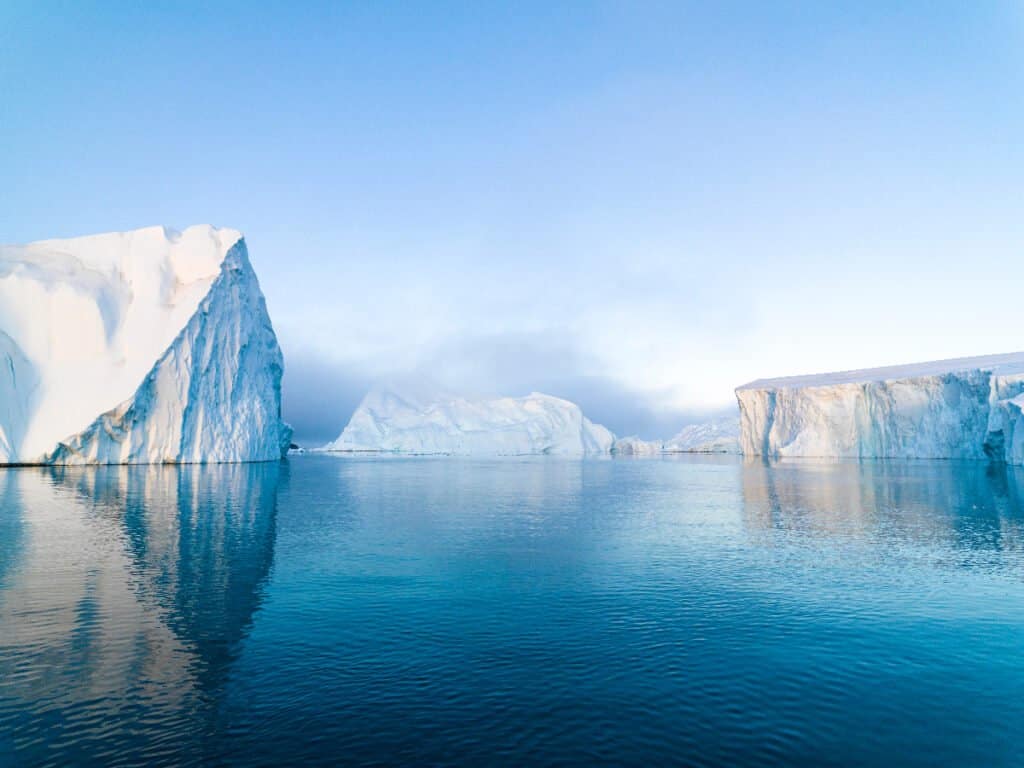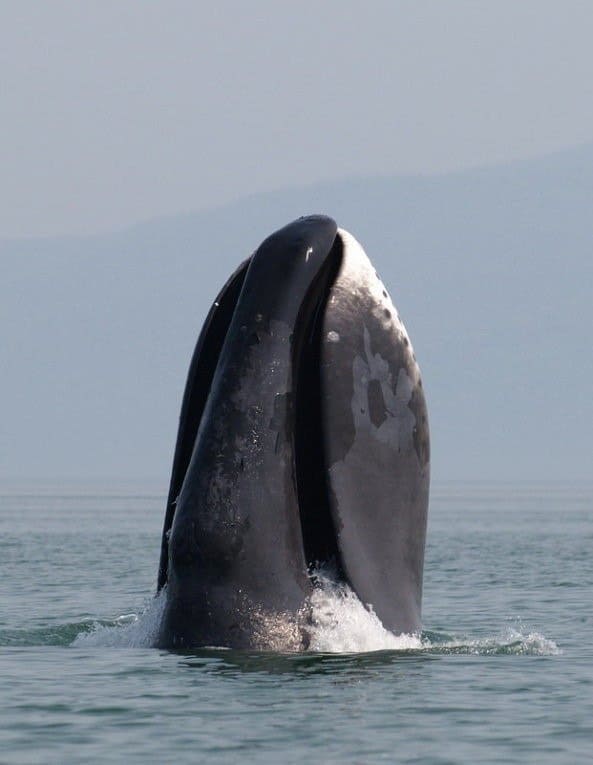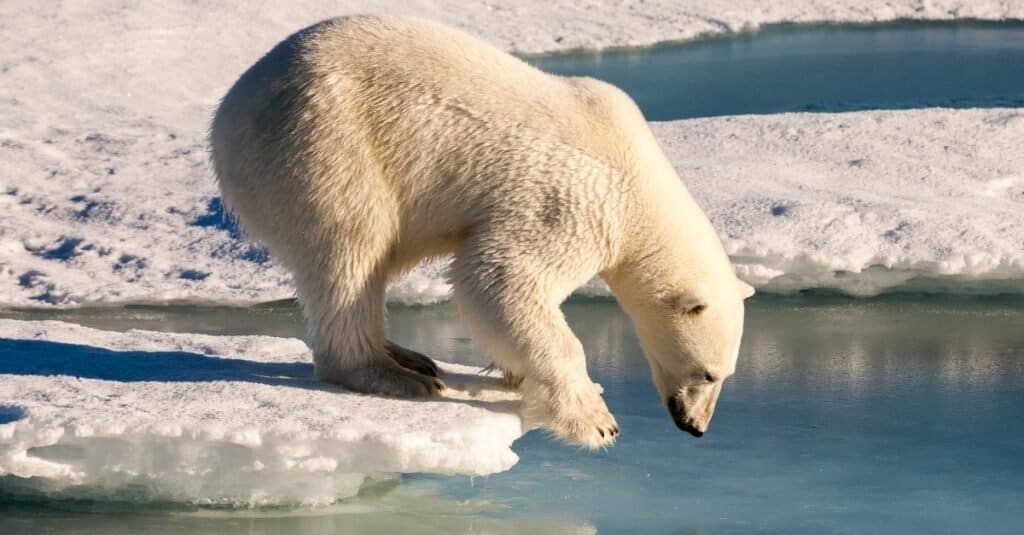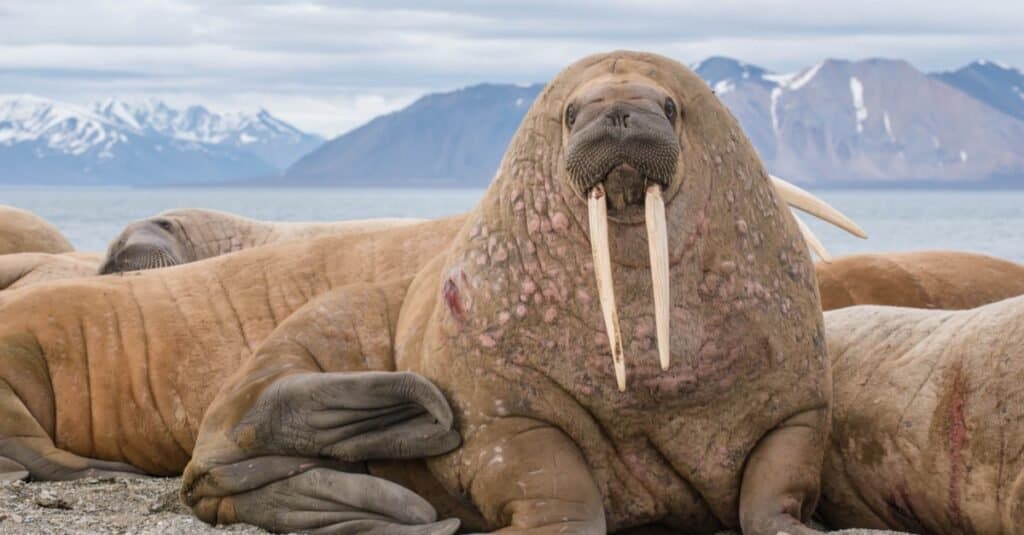The Arctic Ocean is the world’s smallest ocean. It is also the shallowest out of the five major oceans of the world. It covers an area of about 5,430,000 sq mi (14,060,000 km2) and is the coldest out of all the other oceans. This is because it’s also located at the furthest point north and includes the north pole region. On average, the Arctic Ocean is only 3,406 ft (1,038 m) deep. At its deepest point, which is Molloy Hole in the Fram Strait, it is roughly 18,210 ft (5,550 m) deep.
Where is the Arctic Ocean on a Map?
When you are trying to locate the Arctic Ocean on a map or globe, just find any country in the northern hemisphere that has a northern coast, and you can find this ocean by following that to the top of the map or globe. Because maps are skewed and distorted, it may give you a false indication of the size of the ocean, much like we see with Antarctica. Using a globe gives a much more accurate sense of scale for landmarks at close to either the north or south poles.
How Cold Is the Arctic Ocean?

The Arctic Ocean is 33 to 58 degrees Farenheit
©iStock.com/Duyi_Han
The average water temperature of the Arctic Ocean is between 33 and 58 degrees Fahrenheit. It is the world’s northern-most ocean and borders countries including Canada, Iceland, Alaska, Greenland, Norway, and Russia.
In the Arctic, the climate is characterized by cold, long winters and cool, short summers. Since the Arctic is comprised of ocean water that is surrounded by land, the climate is mostly dictated by the temperature of the ocean, which can never be below 28 degrees Fahrenheit (-2 degrees Celsius).
How Wide Is the Arctic Ocean?

The Arctic Ocean is the smallest ocean and it is located in the far north of Earth
©murattellioglu/Shutterstock.com
Being the world’s smallest ocean, the Arctic Ocean isn’t very wide, relatively speaking. The Arctic Ocean is about 1,500 miles (2,400 km) wide. It is also 2,500 miles (4,000 km) long. This is about the same size as the United States.
The Arctic Ocean also consists of marginal seas. These include the Chukchi, Laptev, East Siberian, Barents, Kara, Greenland, White, and Beaufort. Some oceanographers will also include the Bering and the Norwegian seas (some of the lesser known basins due to their remote locations and hostile weather. They are also covered in ice seasonally. This may be subject to change, however, due to the fact that the climate is changing in this area and may result in changes of its total ice cover.
The Arctic Ocean has a few features that are unique and allow it to stand out from the other oceans of the world. One of those distinguishing features is that the Arctic Ocean is almost completely encircled by landmasses. Those landmasses include Eurasia, North America, and Greenland.
The Seas of the Arctic Ocean
As mentioned above, there are a group of seas that are encompassed by the Arctic Ocean. Let’s take a closer look at them and some of their features:
Chukchi Sea
The Chukchi Sea (also known as the Chuuk Sea, the Sea of Chukotsk, or the Chukotsk Sea) covers about 239,383 square miles (620,000 square km) of the Arctic Ocean. It spans the area between Alaska’s Point Barrow and the Long Strait, which is situated off the coast of Wrangel Island. This sea is also connected to both the Bering Sea and the Pacific Ocean at its southern end via the Bering Strait.
This sea is named after that the Chukchi people that inhabit the area’s shores along the Chukotka Peninsula. The Chukchi people traditionally participated in fishing, whaling, and walrus hunting in the cold Chukchi Sea.
Laptev Sea
The Laptev Sea is surrounded on three of its sides by land. To the south of the sea lies the northern Siberian coast. On the west, you will find the Taimyr Peninsula and the Severnaya Zemlya (an archipelago located in the Russian high Arctic). This sea has a very harsh climate that greatly reduces the types of flora and fauna that can survive here. It spans an area of about 700,000 sq km and its deepest area is 11,106 ft deep.
East Siberian Sea

Bowhead whales are one of the few animals in the Siberian Sea
©Olga Shpak / CC BY-SA 3.0, via Wikimedia Commons – License
The Siberian Sea is known as the least studied sea in the Arctic Ocean. This is thanks to its extremely harsh climate. It is located between the Arctic Cape and the Siberian coast. The sea is very shallow and does not reach depths greater than 164 ft (50 m). Because of its harsh climate, the East Siberian Sea does not have much species diversity. The low temperatures, low nutrient levels, and poor salinity do not support life for most species.
Barents Sea
This sea is a productive area for fishing. It has an area of about 1,400,000 square km and its average depth is about 750 ft. This sea is also an important spot for exploring hydrocarbon resources. Both the Pechora Sea and the White Sea are within the Barents Sea. The Pechora Sea lies in the south-eastern part of the Barents Sea, while the White Sea is a southern inlet.
Kara Sea
The Kara Sea is named after the Kara River. The sea is located between the Barents and Laptev Seas, and north of Siberia. It spans about 880,000 square km and its deepest area is 430 ft. During 9 long months out of the year, this sea remains frozen. It receives its fresh water from a few different sources such as the Yenisei and Ob rivers.
Greenland Sea

The Greenlans Sea is located near Greenland where the melting of glaciers and Greenland ice sheet is a cause of rising sea levels
©Maridav/Shutterstock.com
As the name might suggest, the Greenland Sea is located near Greenland. Greenland lies to its west and the Svalbard archipelago lies to its east. There has long been some debate as to whether the Greenland Sea actually belongs to the Arctic Ocean or the Atlantic Ocean. On the other hand, many oceanographic studies show it as belonging to the Norwegian Sea. The Greenland Sea covers a 1,205,000 square km area and has a maximum depth of 15,899 ft.
Beaufort Sea
The Beaufort Sea is another marginal sea belonging to the Arctic Ocean. It is located west of the Arctic Island of Canada. This sea remains frozen during most of the year and is home to one of the largest Beluga whale colonies on earth. The surface area of this sea spans about 178,000 square km and its deepest point is 15,364 ft deep.
What Marine Mammals Can Be Found Near the Arctic Ocean?
There are 12 different types of marine mammals that can regularly be found in and around the Arctic Ocean. That includes four different species of whales, 6 species of seals, the walrus, and the polar bear. There are many other species that can be found living in and around the Arctic Ocean, but we’ll go over just a few of them here. Let’s take a closer look at a few of the marine mammals living near the Arctic Ocean:
Polar Bear

Beautiful polar bear standing on the edge of an ice floe, looking at his mirror image in the sea.
©Mario_Hoppmann/Shutterstock.com
Polar bears are the largest land-based carnivores on earth. They can be found living in the frozen Arctic across the Arctic Ocean, Alaska, Russia, Greenland, Norway, and some parts of Canada. They live and hunt alone but are also known for being quite social. Their diet is mostly comprised of seals, which they hunt down by using their incredible sense of smell. They can even detect a seal that is in the water beneath compacted snow from nearly a kilometer away! They are excellent swimmers and can swim for several hours at a time, traveling from one chunk of ice to another. Their thick fur and layer of fat help keep them warm in frigid temperatures.
Walrus

The walrus is a marine mammal, the only modern species of the walrus family, traditionally attributed to the pinniped group. One of the largest representatives of pinnipeds.
©Mikhail Cheremkin/Shutterstock.com
Walruses are known as one of the most charismatic species that can be found in the Arctic Ocean. It is one of the largest pinnipeds (various types of seals) with the males able to reach weights of 4,400 pounds (2,000 kg)!
A walrus’s characteristic tusks are just elongated canine teeth, and both the males and the females have them. A walrus’s tusks can grow over three feet (one meter) in length and are used to fight and establish dominance within hierarchies. It is also believed that they’re used to create holes in the ice so that the walrus may be able to breathe while hunting and feeding under the ice during winter. Since walruses are so large, they have very few predators, however, killer whales and polar bears have both been known to attack them.
Spotted Seal
The spotted seal is also known as the larga seal. It inhabits the icy waters of the north Pacific Ocean and the adjacent seas including the continental shelf of the Chukchi, Berling, and Beaufort seas. The spotted seal gets its name from the patterns on its coat which are covered in spots over a light-colored background.
A spotted seal’s diet is comprised mostly of fish, crustaceans, and cephalopods. They consume a large variety of fish, whatever is in abundance in the area they inhabit. In the Chukchi Sea, they will mainly feast on walleye pollock, and in the central Bering Sea, they will consume Pacific herring and crustaceans. Since spotted seals do not dive deeply into the water, they will almost exclusively feed on fish in the continental shelf waters that are less than 650 feet deep.
The photo featured at the top of this post is © murattellioglu/Shutterstock.com
Sources
- Wikipedia, Available here: https://en.wikipedia.org/wiki/Arctic_Ocean
- Wikipedia, Available here: https://en.wikipedia.org/wiki/Climate_of_the_Arctic
- Nature, Available here: https://www.nature.com/scitable/knowledge/library/arctic-ocean-circulation-going-around-at-the-102811553/
- World Atlas, Available here: https://www.worldatlas.com/articles/the-marginal-seas-of-the-arctic-ocean.html
- Wikipedia, Available here: https://en.wikipedia.org/wiki/Chukchi_Sea
- Arctic Ocean Diversity, Available here: http://www.arcodiv.org/MarineMammals.html
- World Wide Fund for Nature UK, Available here: https://www.wwf.org.uk/learn/wildlife/polar-bears
- Oceana, Available here: https://oceana.org/marine-life/walrus/
- NOAA Fisheries, Available here: https://www.fisheries.noaa.gov/species/spotted-seal
FAQs (Frequently Asked Questions)
Is the Arctic Ocean salt water?
The Arctic Ocean consists of a layer of freshwater at its surface from melted ice and Arctic rivers. Below this layer, you will find denser, saltier water that comes from the Pacific and Atlantic Oceans.
Is the Arctic Ocean frozen?
No, the entire ocean isn’t frozen, however, each year there is a thin layer of ice that freezes over, but then melts again in the spring.
Is the Arctic Ocean large?
The Arctic Ocean is the world smallest ocean, covering about 5.4 million square miles.
Thank you for reading! Have some feedback for us? Contact the AZ Animals editorial team.







